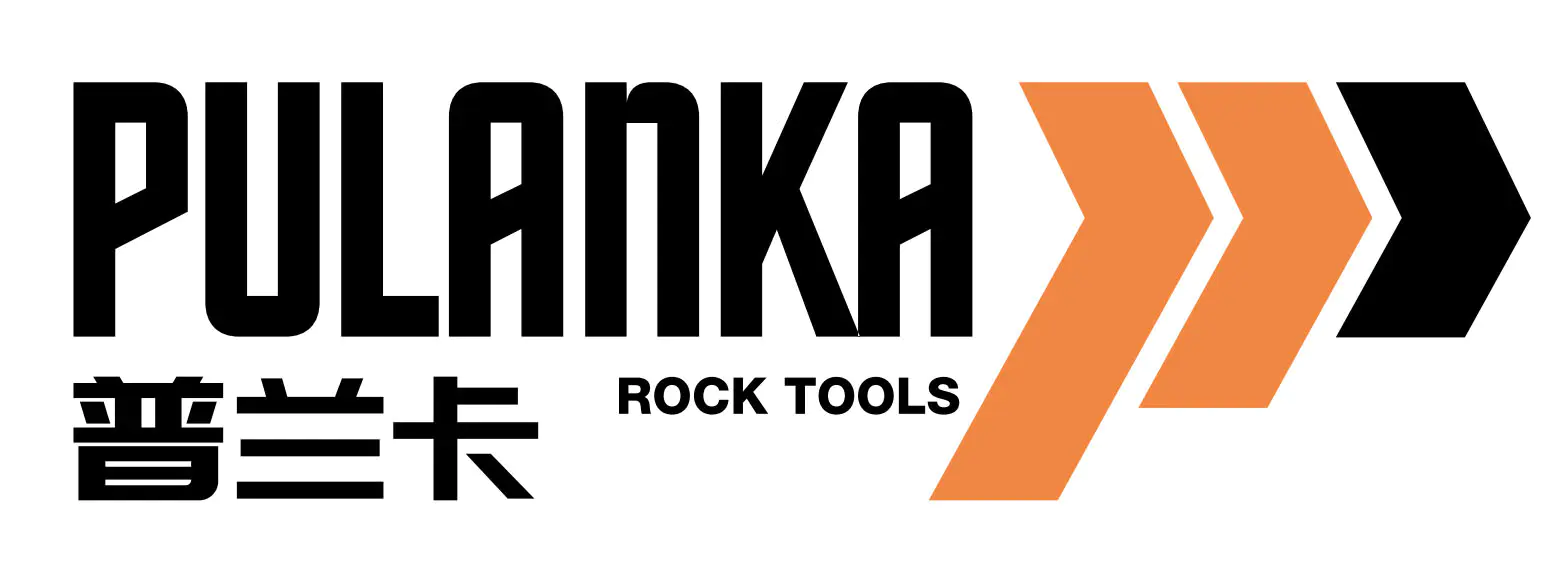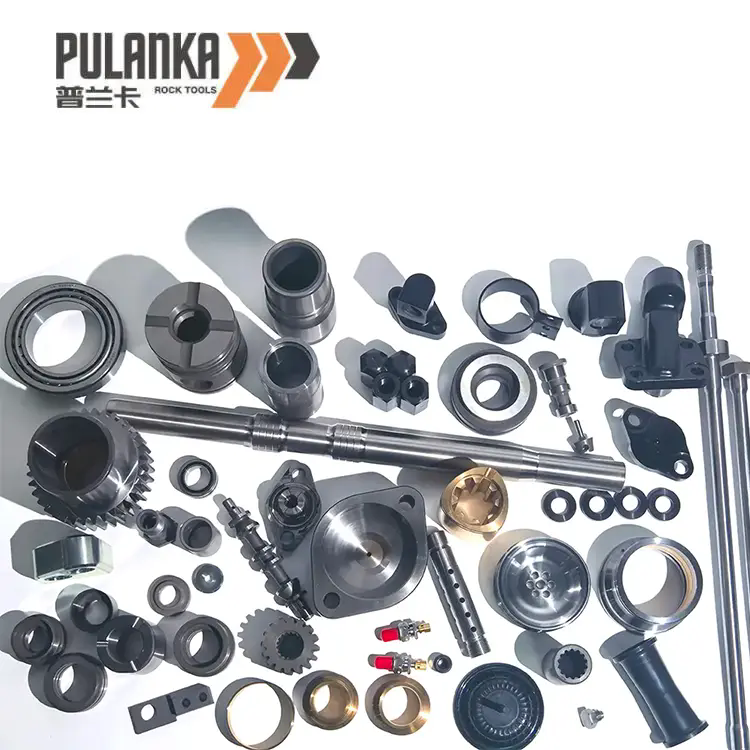How Do Hydraulic Drifter Spare Parts Improve Drilling Efficiency?
2025-09-23
In the modern drilling industry, productivity and cost efficiency rely heavily on the performance of hydraulic drifters. A hydraulic drifter is a critical component of rock drilling machinery, designed to convert hydraulic energy into mechanical striking power. To maintain consistent output, the role of hydraulic drifter spare parts becomes indispensable. These parts are not only replacements when wear and tear occur, but they also represent a strategy for ensuring long-term efficiency, minimizing downtime, and safeguarding investment in expensive drilling equipment.
Hydraulic drifter spare parts cover a broad range of components, from pistons and shank adapters to front heads, side rods, and rotation units. Each part plays a vital role in translating hydraulic power into forceful impact on rock formations. For example, the piston provides the striking energy, while the shank adapter ensures proper transmission of this force to the drill rod. Even a minor failure in one part can cause a chain reaction of inefficiency, forcing operators to halt operations and incur significant repair costs.
What makes hydraulic drifter spare parts particularly valuable is the precision engineering behind them. Unlike generic machinery spares, these components are manufactured with strict dimensional accuracy and high-strength materials. Heat treatment processes, anti-friction coatings, and rigorous testing contribute to extended service life. As drilling environments can be extremely demanding—with high vibration, dust, moisture, and heavy load conditions—only parts built to withstand such challenges can ensure stable performance.
In industries such as mining, tunneling, and construction, equipment downtime directly translates into financial loss. Therefore, hydraulic drifter spare parts are not merely replacements; they are enablers of operational continuity. Choosing the right parts reduces risks of unexpected breakdowns and helps maintain drilling accuracy. In addition, well-maintained spares can significantly reduce energy consumption, since worn-out parts often lead to inefficient transfer of hydraulic pressure, resulting in higher power demand.
This is why procurement managers and site engineers are increasingly focusing on the sourcing of reliable, durable, and compatible hydraulic drifter spare parts. Investing in quality components is a strategic decision, ensuring that drilling machinery can achieve maximum penetration rate, reduced maintenance cycles, and enhanced safety for operators.
Key Specifications and Parameters of Hydraulic Drifter Spare Parts
To evaluate the efficiency of hydraulic drifter spare parts, it is essential to understand their specifications. Each part is designed with technical parameters that directly influence drilling performance, durability, and compatibility. Below is an overview of commonly used hydraulic drifter spare parts and their standard specifications:
| Spare Part | Function in Drifter | Material Composition | Key Parameters | Durability Features |
|---|---|---|---|---|
| Piston | Generates striking energy | Alloy steel, heat-treated | High impact resistance, precise dimensional fit | Anti-fatigue design, long wear life |
| Shank Adapter | Transfers energy to drill rod | High-strength alloy steel | Toughness against torsional load, tight tolerance | Anti-fracture surface treatment |
| Front Head | Supports piston alignment | Forged alloy steel | Accurate positioning, impact load resistance | Extended life via induction hardening |
| Side Rods | Provides structural stability | Hardened alloy steel | Resistance to bending and vibrations | Long-lasting tensile strength |
| Rotation Unit | Enables drill rod rotation | Alloy steel with gears | Smooth rotation, torque capacity up to standard | Heat-treated gear surface for longevity |
| Seals and Bushings | Prevents leakage, reduces friction | Rubber/bronze composite | High sealing efficiency, oil resistance | Wear-resistant material, low maintenance |
| Couplings | Connects drill string components | Alloy steel | High torsional strength, precise threading | Anti-corrosion finish |
These parameters highlight why operators cannot afford to compromise on part quality. For instance, a poorly manufactured piston can lead to uneven striking force, reducing drilling accuracy and causing faster tool wear. Similarly, low-quality seals may result in hydraulic fluid leakage, leading to decreased system pressure and increased energy consumption.
Another critical factor is compatibility. Hydraulic drifter spare parts must be tailored to specific drifter models, such as Atlas Copco, Sandvik, Furukawa, Montabert, and other globally recognized brands. The slightest mismatch can cause inefficiency or even permanent damage. That is why precision engineering and adherence to OEM standards are considered essential when evaluating spare parts.
In addition to specifications, surface finishing plays a significant role. Many parts undergo specialized coating processes such as chrome plating or nitriding, which improve hardness, reduce friction, and extend service life. Such engineering precision ensures that even under heavy-duty cycles, the parts remain reliable and maintain consistent output.
How to Maximize the Performance of Hydraulic Drifter Spare Parts
The efficiency of hydraulic drifter spare parts is not only determined by their design but also by how they are selected, installed, and maintained. Understanding these operational aspects can significantly extend the life cycle of both the spare parts and the drilling equipment.
a. Proper Selection of Spare Parts
The first step toward maximizing performance is choosing parts that match the original equipment manufacturer’s (OEM) standards. Generic, low-cost alternatives may seem attractive but often result in higher long-term expenses due to frequent replacements and reduced efficiency. Engineers should verify hardness levels, dimensional accuracy, and surface treatments before procurement.
b. Correct Installation
Even the highest-quality parts can underperform if installed incorrectly. For example, improper alignment of the shank adapter can cause excessive vibration, leading to premature wear of both the adapter and piston. Following manufacturer guidelines during installation is crucial, and using professional technicians ensures accurate fitment.
c. Routine Maintenance
Regular inspection of hydraulic drifter spare parts prevents sudden breakdowns. Key components such as pistons, seals, and bushings should be examined for signs of wear, cracks, or deformation. Lubrication schedules should be strictly followed to reduce friction and overheating. Hydraulic oil must be clean and free from contaminants, as dirty oil is a leading cause of premature component failure.
d. Environmental Considerations
Since drilling often occurs in harsh environments, protective measures are necessary. Using dust suppression systems, ensuring proper cooling, and shielding components from excessive moisture help maintain spare part integrity. Selecting spare parts that come with anti-corrosion treatments provides added assurance in challenging conditions.
e. Operator Training
Efficient use of hydraulic drifters depends on skilled operators. Trained personnel understand how to handle vibration levels, drilling angles, and impact rates without causing unnecessary strain on parts. Companies that invest in operator training see reduced downtime and improved longevity of both machines and spares.
f. Cost-Efficiency through Spare Part Strategy
Adopting a preventive spare parts strategy rather than a reactive approach offers significant cost benefits. By stocking essential parts such as shank adapters, pistons, and seals, companies can minimize downtime during unexpected breakdowns. Furthermore, preventive replacements at scheduled intervals maintain consistent drilling efficiency and reduce the risk of major system damage.
Through these strategies, hydraulic drifter spare parts can deliver their full potential, contributing to optimal drilling penetration rates, reduced energy consumption, and safer working environments.
FAQs and Final Insights on Hydraulic Drifter Spare Parts
Q1: How do hydraulic drifter spare parts affect drilling accuracy?
Hydraulic drifter spare parts directly influence the stability, impact strength, and precision of the drilling process. For example, a high-quality piston ensures uniform striking energy, while a well-designed shank adapter ensures correct energy transfer to the drill rod. This consistency prevents deviation in drilling and enhances hole straightness, which is vital in mining and tunneling projects.
Q2: How often should hydraulic drifter spare parts be replaced?
The replacement frequency depends on drilling intensity, rock hardness, and maintenance practices. Typically, critical components like pistons and shank adapters may need replacement after 500–800 operational hours under standard conditions, while seals and bushings might require earlier attention. Regular inspection and preventive replacement schedules are the best approach to avoid costly downtime.
The performance of drilling machinery depends heavily on the quality and maintenance of hydraulic drifter spare parts. These components are the backbone of efficient drilling, ensuring precision, durability, and cost-effectiveness. By understanding specifications, focusing on compatibility, and implementing best practices for installation and maintenance, operators can significantly enhance both equipment performance and business outcomes.
In today’s competitive industry, where project deadlines and operational costs determine profitability, choosing the right hydraulic drifter spare parts is more than a technical decision—it is a strategic investment. Reliable suppliers that adhere to international manufacturing standards provide a safeguard against operational disruptions and ensure long-term efficiency.
Pulanka has established itself as a trusted name in this field, delivering precision-engineered hydraulic drifter spare parts designed for durability and high performance across different drilling environments. To learn more about how our products can support your projects, contact us today and explore tailored solutions that fit your drilling needs.
Related News






